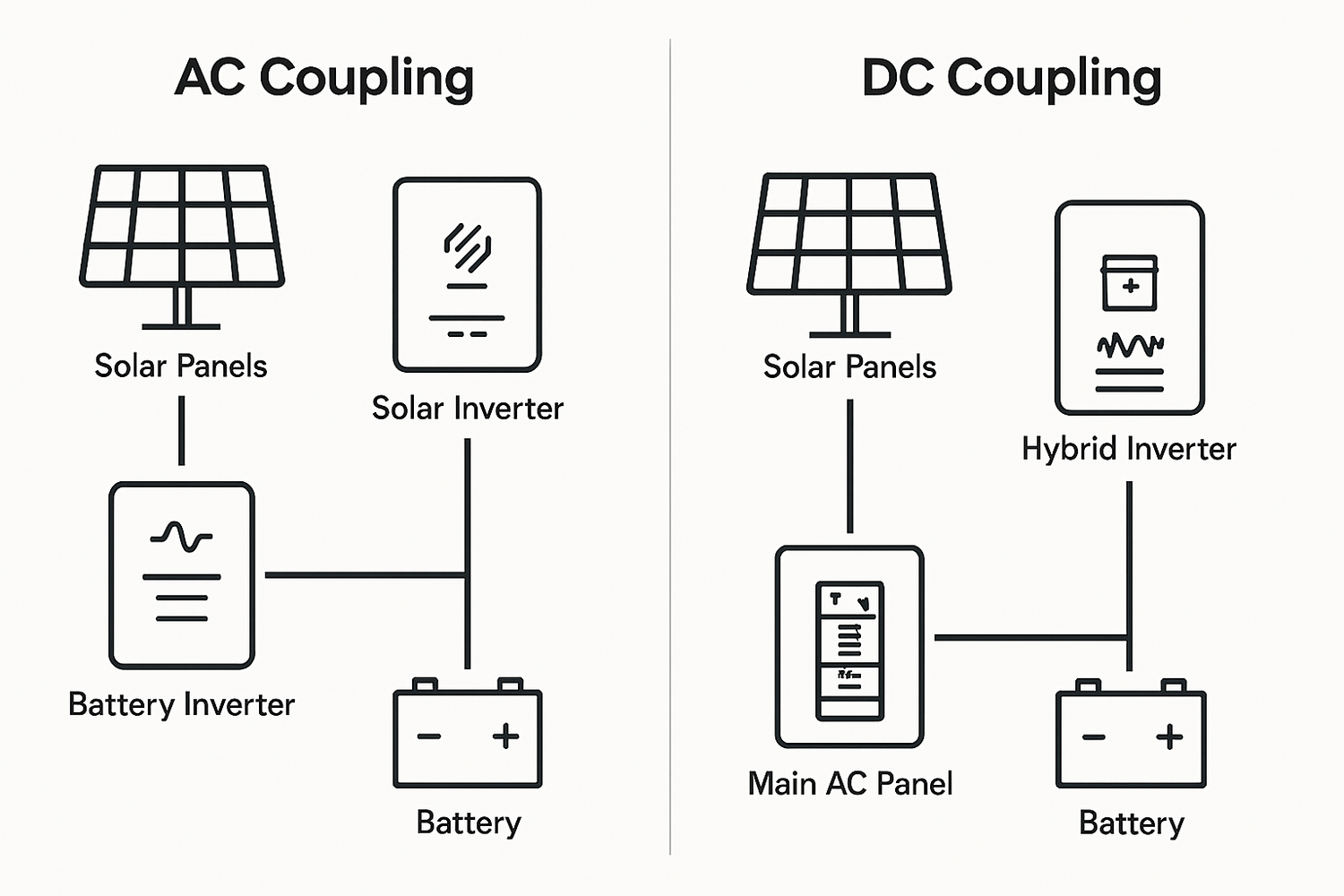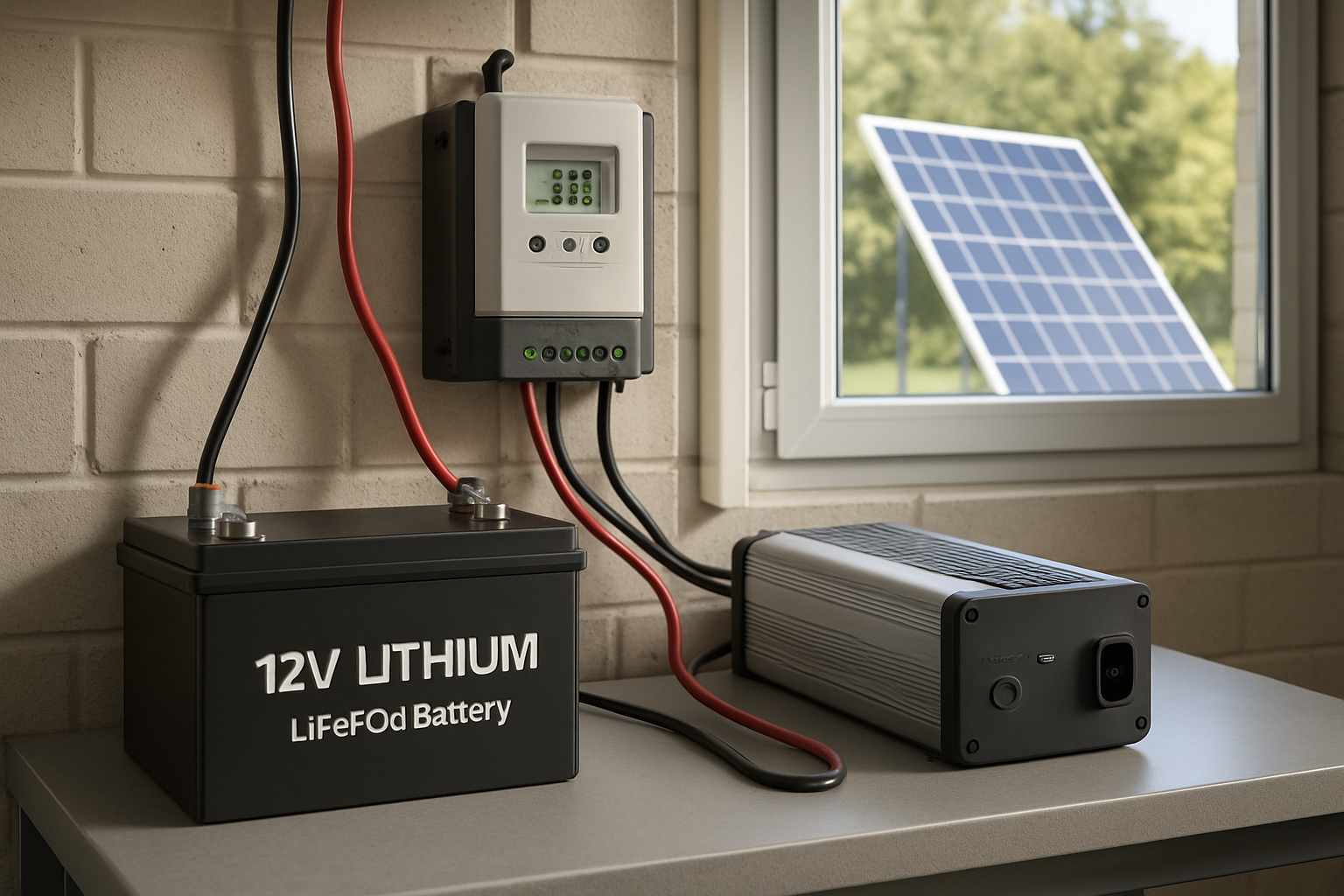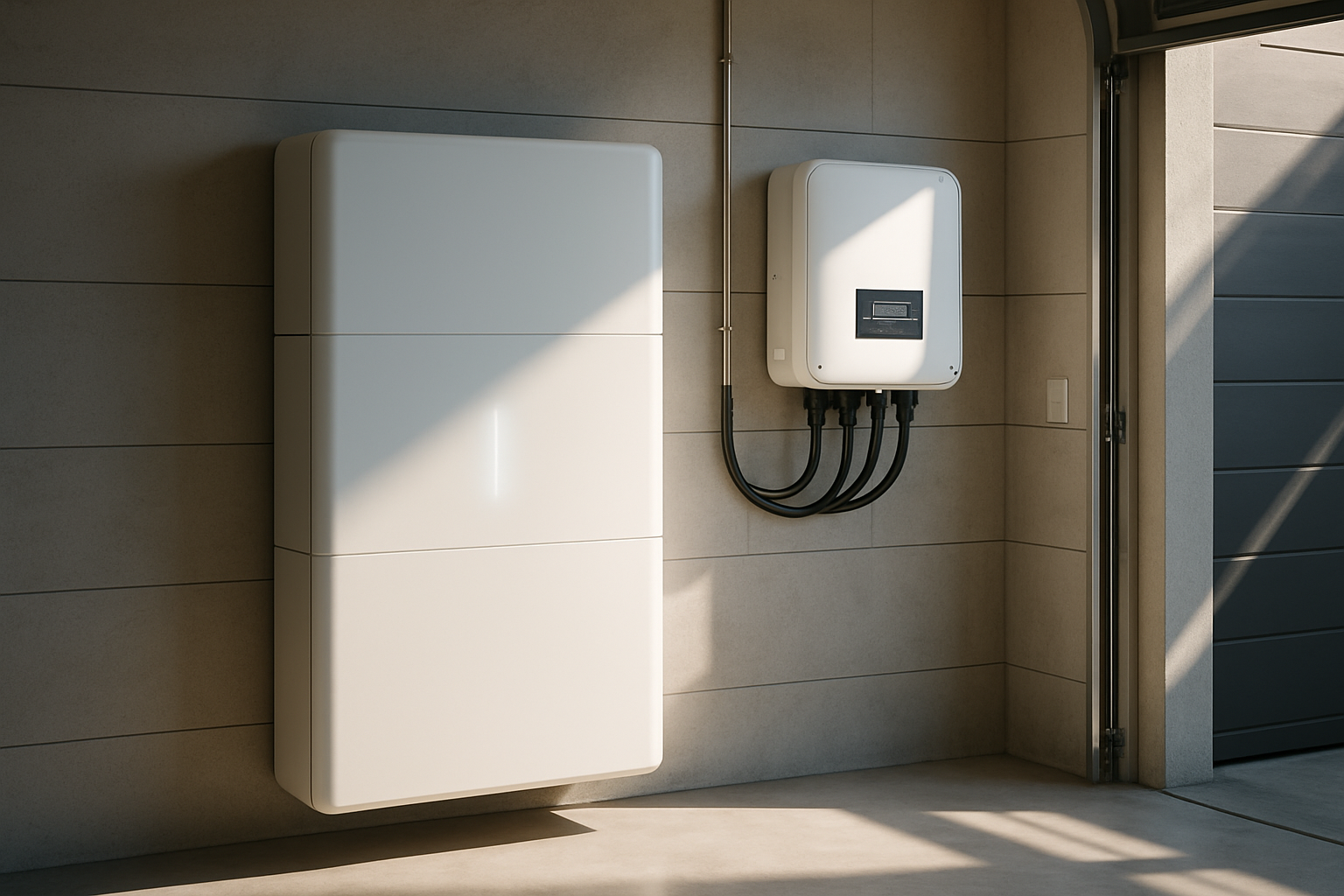You've already made a significant investment in your energy future by installing solar panels. You're generating clean electricity, reducing your carbon footprint, and lowering your utility bills. But what happens when the sun goes down, or when a storm causes a grid outage? Your solar panels alone can't provide power in these situations. This is where retrofitting a battery storage system becomes the logical and powerful next step.
Adding a battery to your existing solar system transforms it from a simple power generator into a comprehensive energy management solution. It allows you to store the excess energy you produce during the day and deploy it whenever you need it most. This guide provides a detailed overview of the technical considerations, available options, and key steps for a successful solar battery integration, drawing from years of experience in developing reliable and scalable energy solutions.
Why Add a Battery to Your Solar System?
The decision to add energy storage to solar is driven by a desire for greater control, security, and savings. As utility policies change and grid reliability becomes a growing concern, a battery backup system offers tangible benefits.
Achieving Energy Independence and Backup Power
The most compelling reason for many is energy independence. A battery frees you from complete reliance on the grid. During a power outage, a properly configured solar-plus-storage system can automatically switch over, keeping your essential appliances running without interruption. This provides invaluable peace of mind, whether you're protecting a family home, a remote farm, or a small business. High-performance Lithium Iron Phosphate (LiFePO4) batteries are particularly well-suited for this, offering a safe and dependable power source for off-grid solar solutions and backup scenarios.
Maximizing Self-Consumption and Reducing Utility Bills
Without a battery, any excess solar power your panels generate is sent back to the grid. While net metering programs offer credit for this, the value is often less than what you pay for electricity later. A battery lets you store that excess energy for your own use. This is called "self-consumption." You can use your stored solar power during the evening and overnight, drastically reducing the amount of electricity you need to buy from your utility. This strategy is especially effective in areas with Time-of-Use (TOU) rates, where electricity costs more during peak evening hours. By using stored energy during these expensive periods, you can achieve significant cost savings.
Grid Stability and Financial Incentives
Home battery systems can also contribute to the stability of the broader electrical grid. Utilities sometimes offer programs that compensate battery owners for providing grid services. Additionally, various government incentives, such as tax credits and rebates, can help lower the upfront cost of a battery addition solar system. According to the U.S. Department of Energy, updating state interconnection rules is helping to reduce the costs and time required to safely connect energy storage and solar-plus-storage systems to the grid, making the process smoother for homeowners.
Key Considerations Before Your Existing Solar Panel Battery Upgrade
Before diving into a battery upgrade, a thorough assessment of your current setup and future needs is critical. A successful retrofit depends on careful planning and understanding system compatibility.
Assessing Your Current Solar System
The first step is a detailed evaluation of your existing solar installation. Key components to check include:
- Solar Inverter: Is it a string inverter, or do you have microinverters? Is it a "storage-ready" hybrid inverter? The type and age of your inverter are the most significant factors in determining your upgrade path.
- System Size: The kilowatt (kW) capacity of your solar array will influence how quickly you can charge a battery. An undersized array may struggle to meet both your daytime needs and charge the battery, especially in winter.
- Available Space: You will need a suitable, accessible, and well-ventilated location for the battery unit and any additional components.
Sizing Your Battery Storage
Choosing the right battery size isn't just about getting the largest capacity. It's about matching the battery to your specific goals. Do you want to back up your entire home or just essential loads like the refrigerator and lights? Are you aiming for one night of autonomy or several days of off-grid capability? Answering these questions will determine the required kilowatt-hours (kWh) of storage. For a detailed walkthrough, consult The Ultimate Guide to Sizing a Deep Cycle Lithium Battery.
Understanding System Compatibility
Not all batteries are compatible with all inverters. Ensuring seamless communication and operation between your existing solar equipment and the new battery system is vital for performance and safety. An integrated Energy Storage System (ESS), which combines a high-performance LiFePO4 battery, a hybrid inverter, and an intelligent management system, can simplify this process by ensuring all components are designed to work together perfectly. To avoid common pitfalls, it's wise to review the 7 Mistakes to Avoid When Adding Lithium Battery Storage.
The Core Decision: AC Coupling vs. DC Coupling
When retrofitting a battery, the central technical choice is how to connect it to your solar system. This comes down to two primary methods: AC coupling and DC coupling. Understanding the difference is key to designing an efficient and cost-effective system.
What is AC Coupling?
In an AC-coupled system, your new battery has its own dedicated inverter, separate from your existing solar inverter. The DC power from your solar panels is first converted to AC power by the solar inverter. This AC power supplies your home's needs, and any excess is then converted *back* to DC by the battery inverter to charge the battery.
- Pros: Excellent for retrofits. It's compatible with virtually any existing solar system, including those with microinverters. The installation is often simpler because it doesn't require replacing the original solar inverter.
- Cons: Slightly lower efficiency. Because the energy is converted multiple times (DC to AC, then back to DC for storage, then back to AC for use), there are small energy losses at each step. This is known as lower round-trip efficiency.
What is DC Coupling?
In a DC-coupled system, the solar panels and the battery are connected on the same DC side of the system, sharing a single, sophisticated hybrid inverter. The DC power from the panels can directly charge the DC battery without being converted to AC first. The hybrid inverter then converts the DC power from either the panels or the battery into AC power for your home as needed.
- Pros: Higher efficiency. With fewer energy conversions, DC-coupled systems typically have a better round-trip efficiency, meaning more of your solar energy makes it into and out of the battery.
- Cons: More complex to retrofit. This approach usually requires replacing your existing solar inverter with a new hybrid inverter, which can increase the upfront cost and complexity of the installation.
Making the Right Choice for Your System
The best choice depends entirely on your existing setup and goals. As noted by the U.S. Department of Energy's research, DC coupling requires only one inverter, as opposed to two in AC coupling, to manage both solar generation and the battery. However, for most retrofits, AC coupling is the more practical and common solution.
| Feature | AC Coupling | DC Coupling |
|---|---|---|
| Best For | Retrofitting existing solar systems | New installations or major inverter upgrades |
| Efficiency | Good (90-94% round-trip) | Excellent (up to 98% round-trip) |
| Installation Complexity | Lower; works with existing solar inverter | Higher; requires replacing the solar inverter with a hybrid model |
| Compatibility | Works with any solar inverter type (string, microinverters) | Requires a compatible hybrid inverter |
For more technical details on this topic, see our comparison: AC vs. DC Coupling: The Best Way to Add a Solar Battery.
The Installation Process: A Step-by-Step Overview
Disclaimer: This information is for educational purposes only. Adding a battery to a solar system involves high-voltage electricity and should be performed by a qualified and certified professional. This is not a DIY guide or legal/investment advice.
Site Assessment and Planning
A professional installer will begin with a thorough site assessment. They will inspect your existing solar system, main electrical panel, and potential locations for the battery. This ensures all components are correctly sized and placed for safety, performance, and compliance with local electrical codes.
Equipment Installation and Wiring
Once a plan is in place, the physical installation begins. For an AC-coupled system, this involves mounting the battery and its dedicated inverter and wiring them into your home's main electrical panel. For a DC-coupled system, the process involves removing your old solar inverter and replacing it with the new hybrid inverter before connecting the battery. Whether you are adding a smaller unit like a 12V 100Ah LiFePO4 battery or a comprehensive 48V LiFePO4 battery bank, the wiring must be done meticulously.
Commissioning and System Configuration
After the hardware is installed, the system must be commissioned. This involves configuring the software that controls how the battery, inverter, and solar panels interact. The installer will set operating parameters based on your goals, such as prioritizing self-consumption to save money or maintaining a full charge for backup power. You will also be shown how to use any monitoring applications to track your system's performance.
Final Thoughts on Your Energy Future
Adding a battery to your existing solar system is more than just an upgrade; it's a fundamental shift in how you manage and consume energy. It elevates your system from a passive generator to an active asset that provides energy security, greater savings, and true independence. By carefully assessing your needs and choosing reliable, scalable solutions, you can unlock the full potential of your solar investment.
The journey toward energy independence is a significant one, and the right technology makes all the difference. High-quality LiFePO4 batteries and integrated home energy storage systems are engineered for longevity and performance, providing a solid foundation for your energy future. If you're still weighing the financial aspects, our analysis can help: Is a Home Battery Storage System Worth It? A 2025 Analysis.





Leave a comment
All comments are moderated before being published.
This site is protected by hCaptcha and the hCaptcha Privacy Policy and Terms of Service apply.